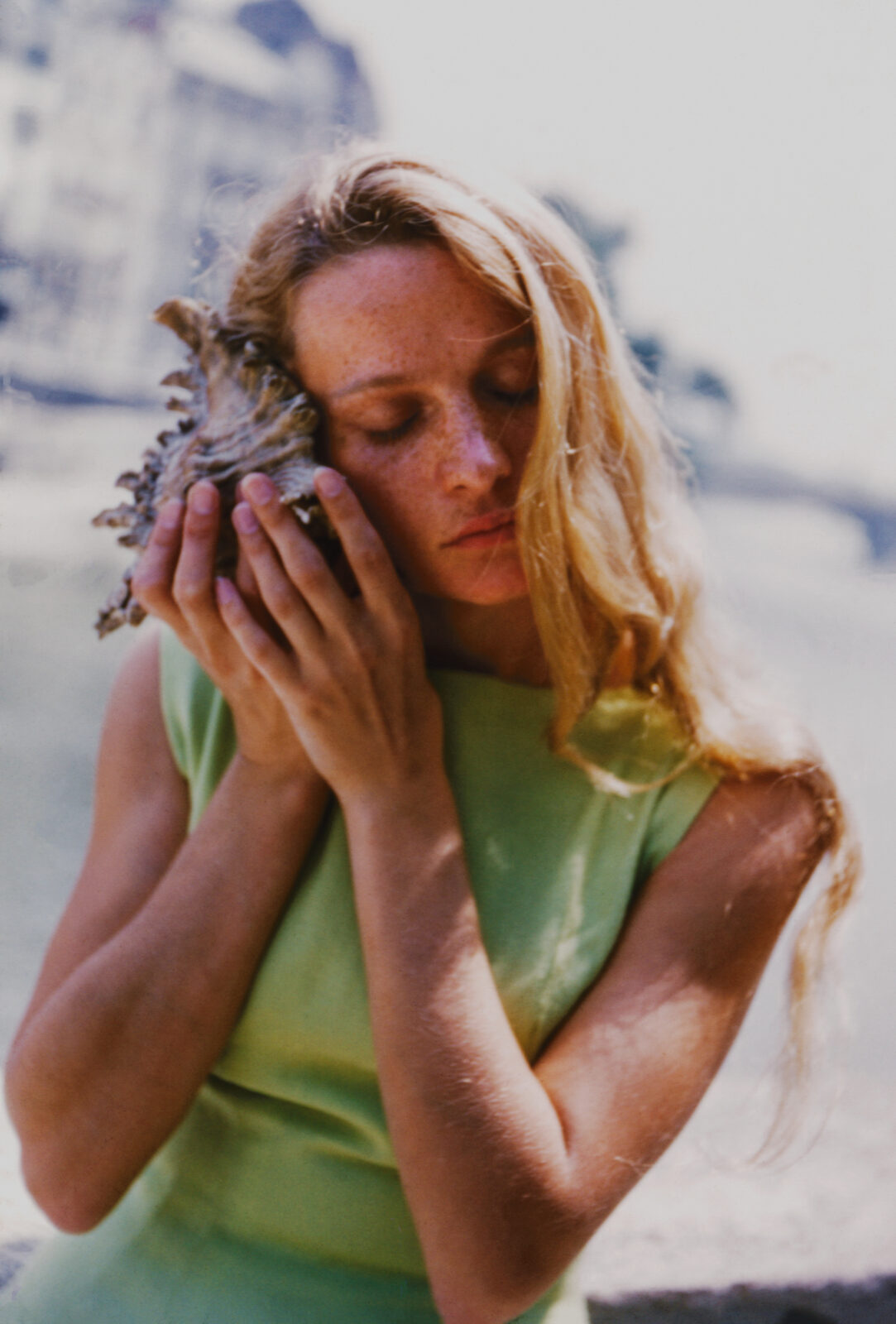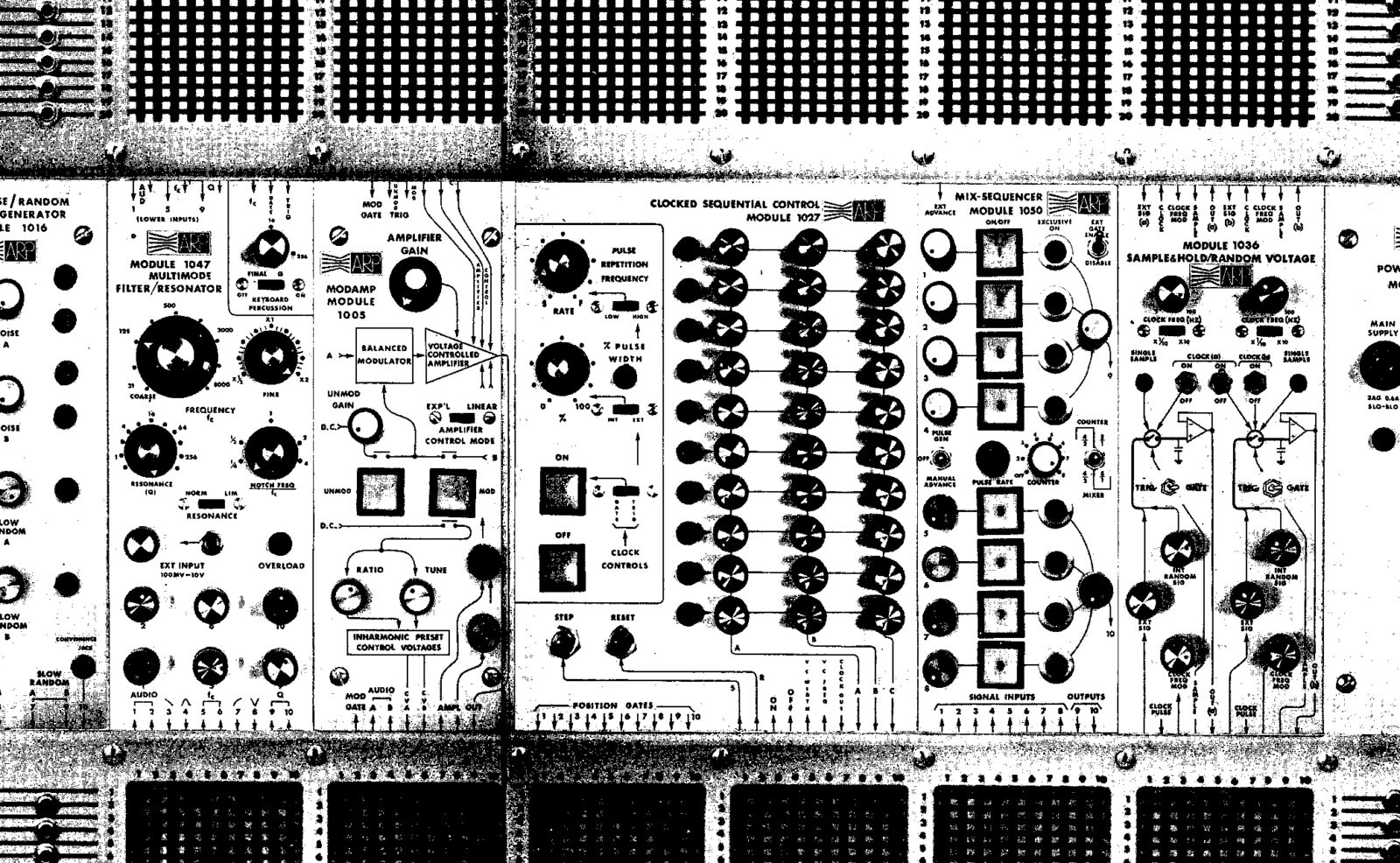
Eliane Radigue, 1958. Photograph by Jacques Brisseaut, courtesy of Fondation A.R.M.A.N and the artist

Eliane Radigue, 1958. Photograph by Jacques Brisseaut, courtesy of Fondation A.R.M.A.N and the artist
When the young composer Éliane Radigue turned on the radio in her home in Nice, France, sounds emanated from its speakers unlike any she had yet encountered. They were the creation of Pierre Schaeffer, the founder of themusique concrète movement that would revolutionize contemporary music. Schaeffer used recorded sounds as his instrument—capturing them directly and returning them to the world directly—in the creation of new music. In one of his signature works, Etude aux chemins de fer, or Railroad Study, Schaeffer went to a train station in the 17th Arrondisement in Paris with a tape recorder and captured the sounds around him: the chuff of steam engines, full-throated whistles, the hiss of brakes. He then copied, cut, and pasted those sounds together into a composition that made Eliane Radigue stop in her tracks. “That’s it.” Recalling the moment, she says, “It became clear that exploring this music would become my path.” Radigue had always been interested in sound. Born in Paris in 1932, she studied piano as a child and later explored choral singing as well as the harp and composition at the Conservatoire. “I was raised on classical music,” she told us earlier this year from her home in Paris. “It is part of my background. I’m still very passionate about it, but when I encountered electronic sounds for the first time, I immediately felt they were their own story.”
Those sounds she heard on the radio inspired her to connect with Schaeffer. Soon she would start commuting from Nice to Schaeffer’s studio at Radio Transmission France (RTF) in Paris and eventually become his assistant. With Schaefer she learned how to cut and splice tape and how to make montages, working with, as she says, “a few old machines from the first generation of tape recorders in the 1950s,” as well as a mixing board, an amplifier, loudspeakers and a microphone. Later she began work at Studio Apsome under the mentorship of Pierre Henry, another important member of musique concrète. With Henry she abandoned the techniques she learned from Schaeffer and began to work with feedback. She had a gift for making feedback poetic, offering an incredible elegance and delicacy. It wasn’t long before she left Henry and musique concrète in order to embark on her own story in sound. As she recalled in an interview with the blog Electronic Beats in 2012, “There was some music I wanted to hear and to hear it I had to make it. It’s as simple as that.”

Details of the ARP 2500
Radigue kept working with electronic sounds, using feedback effects with a mic and a loudspeaker. In the late 1960s she began creating what she called “sound propositions,” or environmental music for art gallery exhibitions, installations, and happenings, often using three long tape loops. In one of these propositions, part of a stark white installation by artist Tanya Mouraud at the Galerie Rive Droite, Radigue hid her speakers behind panels in the gallery walls to prevent her equipment from intruding and looking like “a tarantula in a dish of cream.” Her work was to be heard but not seen.
Though the sound propositions and feedback were her focus, in the 1970s Radigue became interested in working with synthesizers. However, one was not readily available in France. So she headed to the United States and spent a year at the Electronic Music Center at New York University, where she explored a modular synthesizer designed by Don Buchla and installed by composer Morton Subotnick. In addition to the “Buchla,” Radigue also experimented with the Moog synthesizer, but when she tried the ARP 2500, she knew that it was the instrument for her.
In fact she referred to her beloved ARP as “the Stradivarius of synthesizers” and brought it back with her to Paris to have it installed in her apartment. The modular instrument’s optional keyboard was left behind. Radigue preferred to connect directly with the ARP’s potentiometers—those knobs whose subtle changes Radigue had mastered—getting as deep as possible into the “unfolding” of sound. With her synthesizer of choice, she created drone-based sounds and deeply layered compositions that reveal themselves slowly and were more akin to the minimalist compositions of Steve Reich and Phillip Glass, with whom she became friends in New York, than to those by her musique concrète forebears.
THERE WAS SOME MUSIC I WANTED TO HEAR AND TO HEAR IT I HAD TO MAKE IT.
In 1975, after a performance of the first part of Radigue’s trilogy Adnos at Mills College in northern California, three young French people came up to her and said, “Do you know it is not you doing the music?” The complex and pointed statement confused and intrigued her. The trio were disciples of the Buddhist teacher Kunga Rinpoche, and, along with their cryptic wisdom, they gave Radigue the address of Karma Kagyu, a Tibetan Buddhist center in Paris. “When I returned home I went there immediately, and I have never looked back.”
Spirituality has always been an important aspect of Radigue’s life. She grew up Christian—at one point even wanting to become a nun—and later undertook the study of Hinduism. “There were always signs in my life pointing me toward some direction,” she says. After her visit to Karma Kagyu, she became a devoted student of Buddhism, and as her practice deepened, she felt she needed to stop making music: “I cannot do two things at once. I need to be fully into it. While I still stayed a bit connected to my music, my life was mostly dedicated to going to the Dordogne with my master, Pawo Rinpoche.”
Though Buddhism took her away from music, it was Buddhism that brought her back. She was inspired by the words of the venerated eleventh-century Tibetan Buddhist poet-saint-yogi Jetsun Milarepa. She went to her master in deference to ask if she could make a piece based on this historic figure. His response: “Some karmas need to be lived.”
An encouraged Radigue immersed herself in the project, which became Les Chants de Milarepa, or Songs of Milarepa. The recording included the voices of composer Robert Ashley and Radigue’s spiritual teacher Lama Kunga Rinpoche. Her return to music was not as radical as one might assume. She feels she ended up composing “the same music I was doing before encountering Buddhism.” There was no before and after; the sounds and textures were consistent.
“As is often the case when I start something,” she says, “I thought I might make the Songs of Milarepa for the rest of my life.” Ultimately she determined that “after five, I felt that was enough.” But it was not the end of her inspired output. After Les Chants de Milarepa she composed Jetsun Mila, again inspired by the great Buddhist poet. This was followed by Trilogie de la Mort (Kyema, Kailasha, and Koume), profound and deeply felt pieces based on the Bardo Thodrol, or The Tibetan Book of the Dead, that served as reflections on the tragic loss of her son at age thirty-four from a car accident and the death of her beloved master Kunga Rinpoche.
Radigue made her last composition on the ARP in 2005. Today she works directly with musicians such as cellist Charles Curtis, for whom she composed Naldjorlack, a two-and-a-half-hour work in three movements. As she says, she composes for the instrumentalist and not the instrument. There is no score. Nothing is written down. The sounds were created during meetings between Radigue and Curtis until she felt the work was complete. The piece is solely for him. If, one day, he wants to teach it to a student, he will pass down the music the same way Radigue gave it to him, through voice and sound only. In many ways it resembles the Buddhist oral tradition of passing down knowledge from master to disciple.
“I am doing the same music now, but with instrumentalists, which allows for more subtlety, it is more delicate, and allows me the great pleasure of sharing,” Radigue says. “All my life I worked alone, no assistant, except for my cat, which would purr when satisfied, so working with others has made me extremely happy.”

Howard Kaplan is an editor and writer who helped found Spiral magazine in 2017. He currently works at the Smithsonian and divides his time between Washington, DC, and New York City.
Get the latest news and stories from the Rubin, plus occasional information on how to support our work.